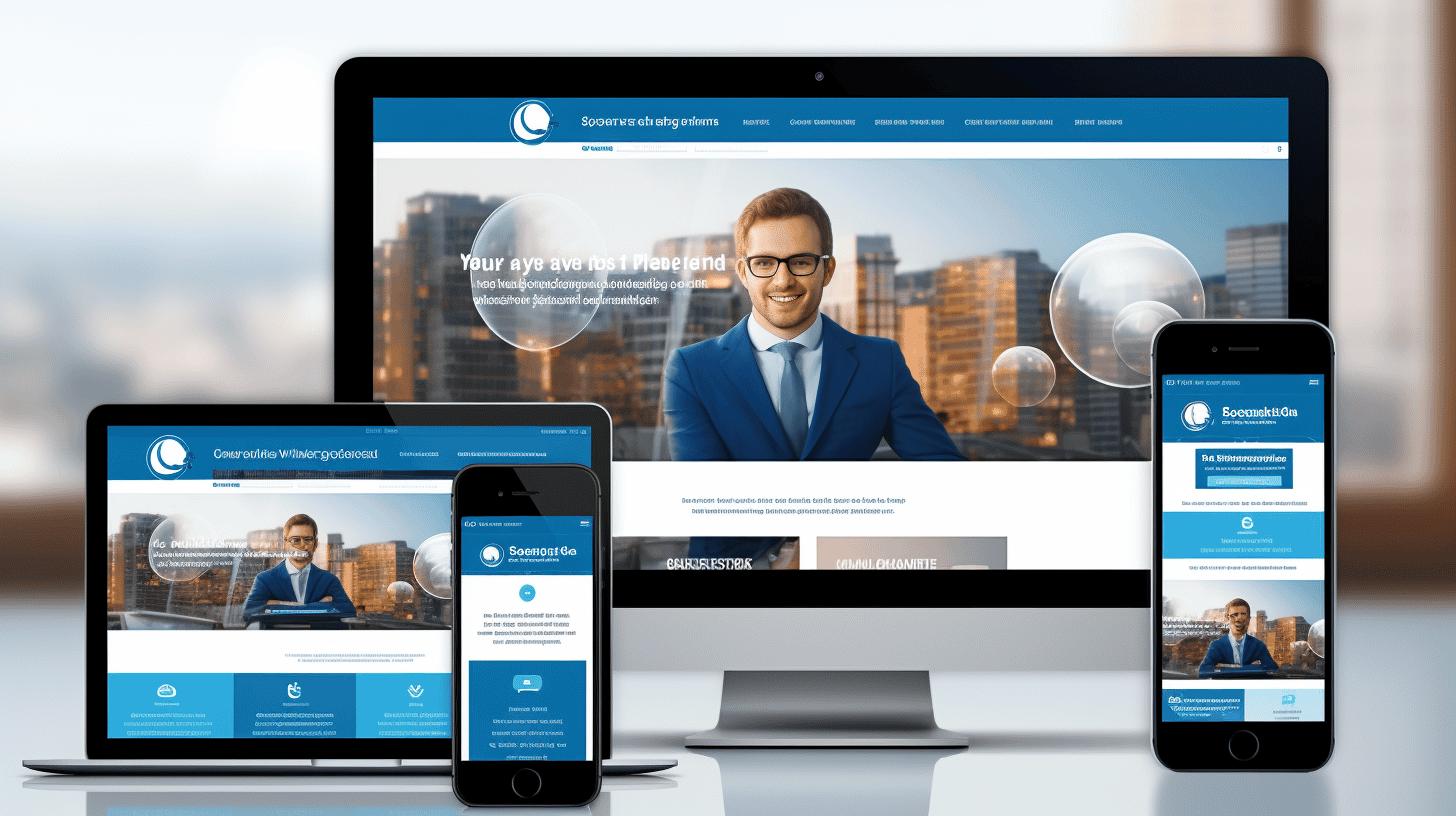在当今的数字时代,用户体验 (UX) 对任何网站的成功都起着至关重要的作用。从美观到功能,一个设计良好的网站可以在吸引和留住用户方面发挥重要作用。对于 WordPress 网站来说尤其如此,这些网站非常受欢迎,并在全球范围内被广泛使用。在本文中,我们将探讨创建用户友好的 WordPress 网站的最佳实践。无论您是企业主、企业家还是网页设计师,了解 WordPress 中 UX 的重要性都至关重要。所以让我们深入研究如何增强用户体验并使您的 WordPress 网站脱颖而出。
说到网站设计,不仅仅是创建视觉上吸引人的页面。它还关乎创造一种用户会喜欢且易于浏览的体验。通过关注用户体验,您可以提高客户满意度、推动更多转化,并最终促进您的业务成功。
但用户体验为什么如此重要呢?让我们来探讨一下用户体验对在线业务各个方面的影响,从电子商务到投资回报再到网站流量。通过了解用户体验的重要性,您将能够做出明智的决策并相应地优化您的 WordPress 网站。那么让我们深入探讨用户体验在电子商务中的重要性吧。
用户体验在电子商务中的重要性
要想成功经营电子商务业务,用户体验 (UX) 起着至关重要的作用。在客户拥有无数选择的世界里,为他们提供无缝且愉快的在线购物体验至关重要。在本文中,我们将探讨用户体验对电子商务的影响,从用户期望和满意度到其对销售和应用使用的影响。让我们深入了解吧!
用户期望和满意度
决定用户对电子商务网站或应用满意度的关键因素之一是它如何满足他们的期望。令人惊讶的是,只有 1% 的用户认为电子商务网站每次都能满足他们的期望[1]。这些较高的期望源于用户友好型网站和应用程序在数字体验的其他领域的可用性不断提高。
为了满足这些期望,电子商务企业必须专注于创建一个直观且易于导航的用户友好型平台。杂乱无章的网站可能会导致用户感到沮丧,并最终导致用户流失。通过优先考虑无缝的用户体验,企业可以确保客户对其品牌有积极的看法,并更有可能继续购买。
用户体验对销售和应用程序使用的影响
用户体验对销售的影响不容小觑。研究表明,高达 74% 的企业认为用户体验对于提高销售至关重要[2]。如果顾客在电子商务网站或应用程序上有积极的体验,他们更倾向于进行购买并在将来再次购物。
此外,用户体验的作用不仅限于传统网站,还延伸到移动应用。在当今以移动为中心的世界,用户希望在所有平台上都能获得一致且愉快的体验。事实上,90% 的用户已经因为糟糕的用户体验而停止使用应用[2]。这强调了优化移动应用程序的用户体验以确保其参与度和可用性的重要性。
用户感知和品牌放弃
用户体验的另一个关键方面是它如何影响用户感知和品牌放弃。在竞争激烈的市场中,如果客户对某个品牌不感兴趣,他们很快就会放弃它。高达 68% 的用户承认放弃某个品牌是因为他们感觉与它没有联系或不欣赏它[3]。这强调了创造用户体验的重要性,这种体验不仅能满足期望,而且还能对用户对您的品牌的看法产生积极影响。
通过关注用户体验,企业可以培养强大的品牌形象和客户忠诚度。当用户在网上购物过程中感到被重视和欣赏时,他们更有可能成为品牌拥护者并继续使用您的产品。
☝️专业提示: 创建用户友好的网站或应用程序比您想象的要容易!借助 WordPress 等平台,您可以利用用户友好的主题和插件来增强电子商务网站的用户体验。要了解有关创建用户友好的 WordPress 网站的更多信息,请查看以下有用的资源: 用户友好的 WordPress 网站.
总之,投资用户体验是成功经营电子商务业务的基本方面。通过满足用户期望、提高销售额和影响品牌认知度,企业可以在竞争激烈的市场中脱颖而出,并与客户建立持久的关系。因此,请将用户体验作为电子商务战略的优先事项,并观察您的业务蓬勃发展!
用户体验对投资回报的影响
用户体验和投资回报率的投资
谈到用户体验 (UX) 的投资,其对投资回报的影响是不可否认的。产品或网站的设计和功能对其成功以及最终的投资回报率 (ROI) 有着重大影响。
您是否知道,在用户体验上每投资 $1 就有可能产生 $100 的回报?这是任何投资者都无法忽视的令人印象深刻的投资回报率。有如此可观的数字,显然优先考虑用户体验是一项长期回报丰厚的投资。
但为什么用户体验会对投资回报率产生如此深远的影响呢?主要原因之一是客户满意度。当用户对产品或网站有积极的体验时,他们更有可能成为忠实客户并将其推荐给其他人。这可以增加销售额和收入,从而提高企业的投资回报率。
用户体验设计和客户满意度的提高
随着网络在当今数字环境中的重要性日益提高,各行各业的企业都意识到了良好的用户体验设计的重要性。这也不足为奇——改进的用户体验设计可以显著提高客户满意度,这对投资回报率具有深远的影响。
Forrester Research 开展的一项研究发现,精心设计的用户界面 (UI) 可以将转化率提高多达 200%。但令人兴奋的是,当与无缝用户体验 (UX) 相结合时,这些转化率可以翻倍,达到令人难以置信的 400%。
想想看——提供流畅直观体验的网站或应用会让用户感到满意、参与其中,并更有可能转化为客户。愉快的用户旅程不仅可以增进信任,还可以鼓励重复业务和推荐。
那么,企业如何利用用户体验和投资回报率之间的关系呢?通过投资用户体验研究、设计和测试,企业可以创造以用户为中心的体验,从而提高客户满意度,进而提高利润。这是一个双赢的局面,最终可以为其初始投资带来可观的回报。
总之,用户体验对投资回报的影响不容小觑。优先考虑用户体验不仅可以提高客户满意度,还可以提高转化率、增加销售额和提高投资回报率。认识到用户体验的价值并投资于用户体验改进的企业将在当今竞争激烈的市场中取得长期成功。🚀
用户体验在网站流量中的作用
在当今的数字时代,一个设计精良、用户友好的网站不再只是奢侈品,而是一种必需品。用户体验 (UX) 在吸引和留住网站访问者方面起着至关重要的作用。它涵盖了从用户浏览网站的难易程度到网站的外观吸引力等各个方面。良好的用户体验可以显著影响网站流量,从而提高参与度、增加转化率,并最终改善业务成果。
谷歌对网站流量的影响
众所周知,谷歌在搜索引擎市场占据主导地位,其平台的 75% 网站流量惊人。当用户搜索特定查询时,谷歌的算法会根据各种因素(包括相关性、可信度和用户体验)确定搜索结果的排名。因此,拥有出色的用户体验的网站可以对其在搜索结果中的可见性产生积极影响,从而带来更多自然流量。
为了促进良好的用户体验并提高网站在 Google 上的排名,网页设计师和开发人员需要关注以下关键要素:
- 页面加载速度:加载缓慢的网站会让用户感到沮丧,并增加跳出率。优化网站速度可以显著改变用户对网站的看法和互动方式。
- 移动响应能力:由于大多数互联网用户通过移动设备访问网站,因此网站是否适合移动设备且响应迅速至关重要。这可确保不同屏幕尺寸和设备上的无缝用户体验。
- 用户友好导航:结构良好且直观的导航菜单可让用户快速轻松地找到所需内容。实现清晰简洁的菜单、面包屑导航和搜索功能可提升整体用户体验。
- 引人入胜的视觉设计:视觉吸引力在吸引用户注意力和创造积极的第一印象方面起着至关重要的作用。颜色、排版、图像和空白的正确平衡可以创建美观且引人入胜的用户界面。
网页设计服务市场规模的下降
有趣的是,尽管用户体验的重要性日益增加,但网页设计服务的市场规模从 2018 年到 2023 年却下降了 2.7%。这种下降可以归因于以下几个因素:
- 提高网站创建者的可用性: 随着网站建设者和 DIY 平台的兴起,企业和个人无需花费大量成本即可创建网站。这减少了对专业网页设计服务的需求。
- 预先设计的模板盛行:许多企业选择预先设计的模板,这些模板具有美观且用户友好的界面。这些现成的模板是定制网页设计服务的经济实惠的替代方案。
- 注重网站优化:由于重视用户体验和性能,企业更多地投资于网站优化,而不是彻底改造其网站设计。这种方法的转变导致了网页设计服务需求的下降。
应用内购买的增长
虽然网页设计服务的市场规模可能正在下降,但 2023 年上半年应用内购买 (IAP) 的数量同比稳步增长。移动应用程序已成为我们生活中不可或缺的一部分,企业正在利用这一趋势,通过应用程序提供有价值的产品和服务。
增强移动应用内的用户体验对于企业推动转化和创造收入至关重要。以下是一些有助于应用内购买增长的因素:
- 简化付款流程:通过实施无缝、便捷的支付方式,企业可以减少购买过程中的摩擦,并鼓励用户进行更多的 IAP。
- 个性化推荐:利用用户数据和行为模式,企业可以提供个性化的产品推荐,增加用户进行相关应用内购买的可能性。
- 游戏化和奖励:通过融入游戏化元素并为完成某些操作或达到里程碑提供奖励,企业可以激励用户进行应用内购买。
总之,用户体验在推动网站流量和实现业务目标方面起着关键作用。谷歌的影响力、网页设计服务需求的下降以及应用内购买的增长都凸显了创造卓越用户体验的重要性。投资用户体验设计和优化是吸引和留住访客、增加参与度并最终推动转化和收入的关键。因此,如果你想让你的网站或应用在数字领域脱颖而出,请在设计和开发过程的每个阶段优先考虑用户体验。🚀
公众对用户体验和用户界面的回应
在当今的数字世界中,用户体验 (UX) 和用户界面 (UI) 在塑造人们对网站的看法方面发挥着至关重要的作用。消费者变得越来越挑剔,他们对无缝且美观的在线体验的期望比以往任何时候都高。本节将探讨公众对用户体验和用户界面的反应,揭示消费者对美观网站的信任度以及用户返回用户体验不佳的网站的可能性。
消费者对美学网站的信任
在视觉驱动的在线环境中,用户对美观的网站给予高度信任也就不足为奇了。根据最近的研究,高达 75% 的用户更有可能信任具有视觉吸引力设计的网站[1]这表明了UI在影响消费者感知和建立信誉方面的重要性。
精心设计的网站,配以精心挑选的颜色、布局和互动元素,可以唤起专业、可信和真实的感觉。当用户遇到视觉上令人愉悦的设计时,它不仅会吸引他们的注意力,还会对网站背后的品牌或业务产生信心。这种信任最终有助于提高用户参与度和更高的转化可能性。
返回用户体验较差的网站的可能性
相反,用户体验不佳的网站会对用户满意度和忠诚度产生不利影响。当用户难以浏览网站、遇到断开的链接或加载时间缓慢时,就会产生挫败感。研究表明,88% 的消费者不太可能返回用户体验不佳的网站[1]。这凸显了投资用户体验的重要性,不仅可以吸引新用户,还可以留住现有用户。
网站的可用性和用户友好度直接影响用户满意度以及他们对品牌或业务的看法。当用户在浏览网站时获得积极的体验时,他们更有可能参与其内容、完成所需的操作并在将来再次访问。另一方面,糟糕的用户体验会阻止用户进一步探索,从而失去转化、客户忠诚度和品牌宣传的机会。
总之,公众对用户体验和用户界面的反应对于塑造消费者的信任和再次访问网站的可能性具有重要意义。通过优先考虑视觉吸引力和用户友好的设计,企业可以创造积极的印象,培养信任并鼓励重复访问。相反,忽视用户体验可能会导致用户沮丧、失去信任并降低用户保留率。投资用户体验和用户界面不仅是数字成功的重要组成部分,也是在竞争激烈的在线环境中与客户建立牢固关系的机会。
[1] 附加数据:
- 88% 的消费者不太可能再次访问用户体验不佳的网站
- 75% 的用户信任美观的网站
WordPress 网站和用户体验
在当今的数字环境中,网站已成为任何企业或品牌不可或缺的一部分。它们充当虚拟店面,代表公司并向世界展示其产品或服务。随着内容管理系统 (CMS) 的出现,开发人员和非技术用户都可以更轻松地构建和管理网站。WordPress 就是这样一种流行的 CMS。
WordPress 网站的流行
多年来,WordPress 已经获得了极大的欢迎,其使用统计数据不言而喻。根据最近的数据, 互联网上所有网站的 43.2% 到 57% 由 WordPress 提供支持1。考虑到该平台的众多优势,包括易用性、灵活性和广泛的插件生态系统,这种主导地位并不令人意外。凭借其用户友好的界面和可定制的主题,WordPress 允许企业和个人创建令人惊叹且功能齐全的网站,而无需大量的编码技能。
UX 在 WordPress 网站中的作用
对于网站而言,用户体验 (UX) 在决定其成功与否方面起着至关重要的作用。精心设计且直观的用户体验可以让网站脱颖而出,吸引访客并最终推动转化。这在当今以移动设备为主导的世界中尤为重要,因为大约 55% 的网络流量 来自移动设备2. 确保在不同设备和屏幕尺寸上获得流畅、无缝的用户体验至关重要。
WordPress 提供了一系列功能和工具,可以增强您网站上的用户体验。让我们来看看您可以利用 WordPress 的强大功能来创造卓越用户体验的一些方法:
- 响应式设计:使用响应式主题,您的 WordPress 网站将自动适应不同的屏幕尺寸,确保在桌面、平板电脑和移动设备上获得一致且愉快的用户体验。
- 页面加载速度:加载缓慢的网站会让人沮丧,并导致高跳出率。WordPress 提供各种优化技术和插件来帮助提高网站的性能,从而缩短加载时间并提高用户满意度。
- 直观的导航:WordPress 提供可自定义的菜单和导航结构,让您为访客创建无缝且直观的浏览体验。轻松导航可让用户快速找到所需内容,从而提升用户体验。
随着企业越来越认识到用户体验的重要性,难怪 2023 年,71% 的企业正在使用网站3良好的用户体验不仅可以吸引访客,还可以增强品牌认知度。研究表明 60% 至 62% 的客户表示良好的用户体验可提升品牌认知度4.
为了确保您的 WordPress 网站上的用户体验流畅且优化,请考虑利用托管 WordPress 服务的优势。托管 WordPress 提供商提供专业知识和支持,以确保您的网站顺利运行,让您安心专注于核心业务。详细了解托管 WordPress 对用户体验的优势 在这里,!
1 来源:[WordPress 使用情况统计](https://w3techs.com/technologies/details/cm-wordpress/all/all)
2 来源:[Statista – 全球网站访问量移动端份额](https://www.statista.com/statistics/277125/share-of-website-traffic-coming-from-mobile-devices/)
3 来源:[Statista – 使用网站的企业百分比](https://www.statista.com/statistics/277125/share-of-website-traffic-coming-from-mobile-devices/)
4 资料来源:[UX 统计](https://uxdesign.cc/ux-statistics-7-stats-you-need-to-know-about-user-experience-7b3f0b42f3b3)
结论
总之,优先考虑用户体验对于任何 WordPress 网站的成功都至关重要。通过采用最佳实践并遵循用户友好型设计的原则,企业可以提高用户满意度、增加销售额和应用程序使用率,并提高投资回报率。
投资可靠的托管 WordPress 托管平台(如 Managed-WP™)可以进一步简化流程,简化基础设施管理,提供全天候 WordPress 支持,并确保主动监控。借助 Managed-WP™,企业可以专注于创造引人注目的数字体验,同时将技术方面的问题交给专家处理。
请记住,积极的用户体验不仅可以培养信任和忠诚度,还会影响网站流量和消费者看法。因此,请优先考虑以用户为中心的设计,并观察您的 WordPress 网站是否蓬勃发展。
了解有关 Managed-WP™ 如何帮助增强您的 WordPress 网站的用户体验的更多信息。
常见问题
- 有哪些最佳做法可以增强 WordPress 网站用户体验?
增强 WordPress 网站用户体验的一些最佳实践包括:1. 采用简洁直观的网站设计,2. 优化网站速度和性能,3. 实现简单的导航和清晰的网站结构,4. 提供相关且高质量的内容,5. 包括表单或评论部分等互动元素以鼓励用户参与。
- 网站设计如何有助于改善用户体验?
简洁直观的网站设计可帮助用户无缝浏览网站、轻松查找信息并获得愉快的整体体验。它涉及使用结构良好的布局、清晰的字体、合适的颜色和视觉上吸引人的元素来创建用户友好的界面。
- 为什么网站速度对用户体验很重要?
网站速度对于用户体验至关重要,因为加载缓慢的网站会让访问者感到沮丧并导致更高的跳出率。优化图像、最小化代码、启用缓存和使用可靠的托管服务提供商是提高网站速度和确保流畅用户体验的一些方法。
- 便捷的导航如何使用户受益?
轻松导航可让用户快速找到所需信息,而不会感到迷茫。使用逻辑菜单结构、清晰的标签并提供搜索功能,让用户轻松浏览您的 WordPress 网站。
- 为什么高质量的内容对用户体验很重要?
高质量的内容对于吸引用户并向他们提供有价值的信息至关重要。确保您的内容相关、写得好、格式正确,并在适当的时候包含多媒体元素。通过向用户提供有用且引人入胜的内容,这可以增强用户体验。



















